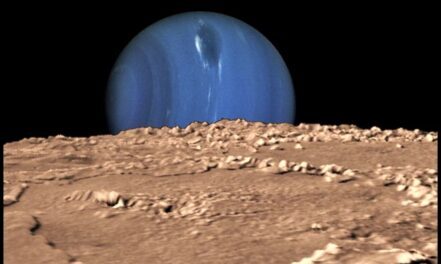
Triton, Hyperion, Ariel and Umbriel
Lancashire-born William Lassell (1799-1880) grew up in Liverpool within a clock-making family, acquiring the precision engineering skills needed for his lifelong passion ~ astronomy. Financed by the profits of his brewery, he built a succession of increasingly large telescopes in his workshop. In 1842 he began recording new sightings through his 9″ telescope, but it was with his 24″ reflector telescope, constructed in 1845, that he discovered Triton, the largest of Neptune’s 13 moons, in 1846 (the others were found more than a century later).
Neptune itself had only just been discovered and Lassell’s achievement greatly enhanced his reputation, culminating in his Presidency of the Royal Astronomical Society in 1870-72. Meanwhile, he co-discovered Hyperion, a moon of Saturn, in 1848; co-discovered Saturn’s Crepe Ring in 1850; and discovered Ariel and Umbriel, two moons of Uranus, in 1851.
He invented a polishing machine for his speculum mirrors and pioneered the equatorial mount that helps maintain fixed focus. He built a 48″ telescope in 1858 and moved everything to Malta for some years for better viewing under her cloudless skies. On his return he bought a house near the River Thames in Berkshire ~ the street is now named Lassell Gardens. There are two craters, one asteroid and a ring of Neptune also named after him.
(Image of Triton’s supposed icy surface looking towards a blue Neptune: NASA via picryl.com / CC0)
